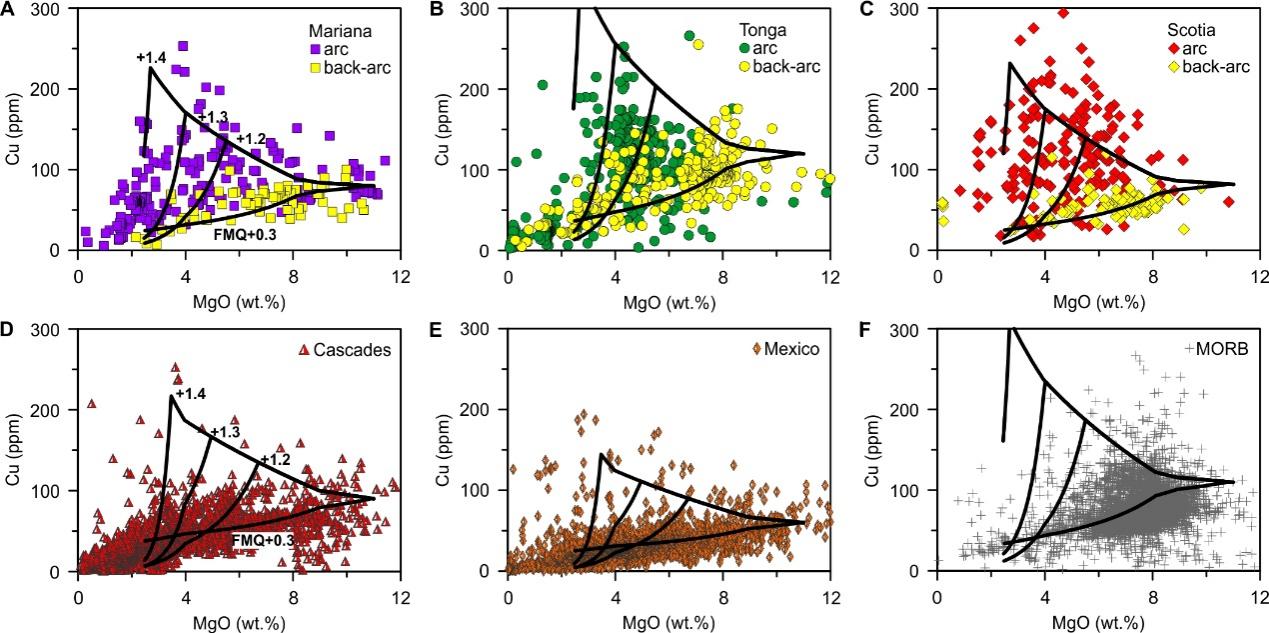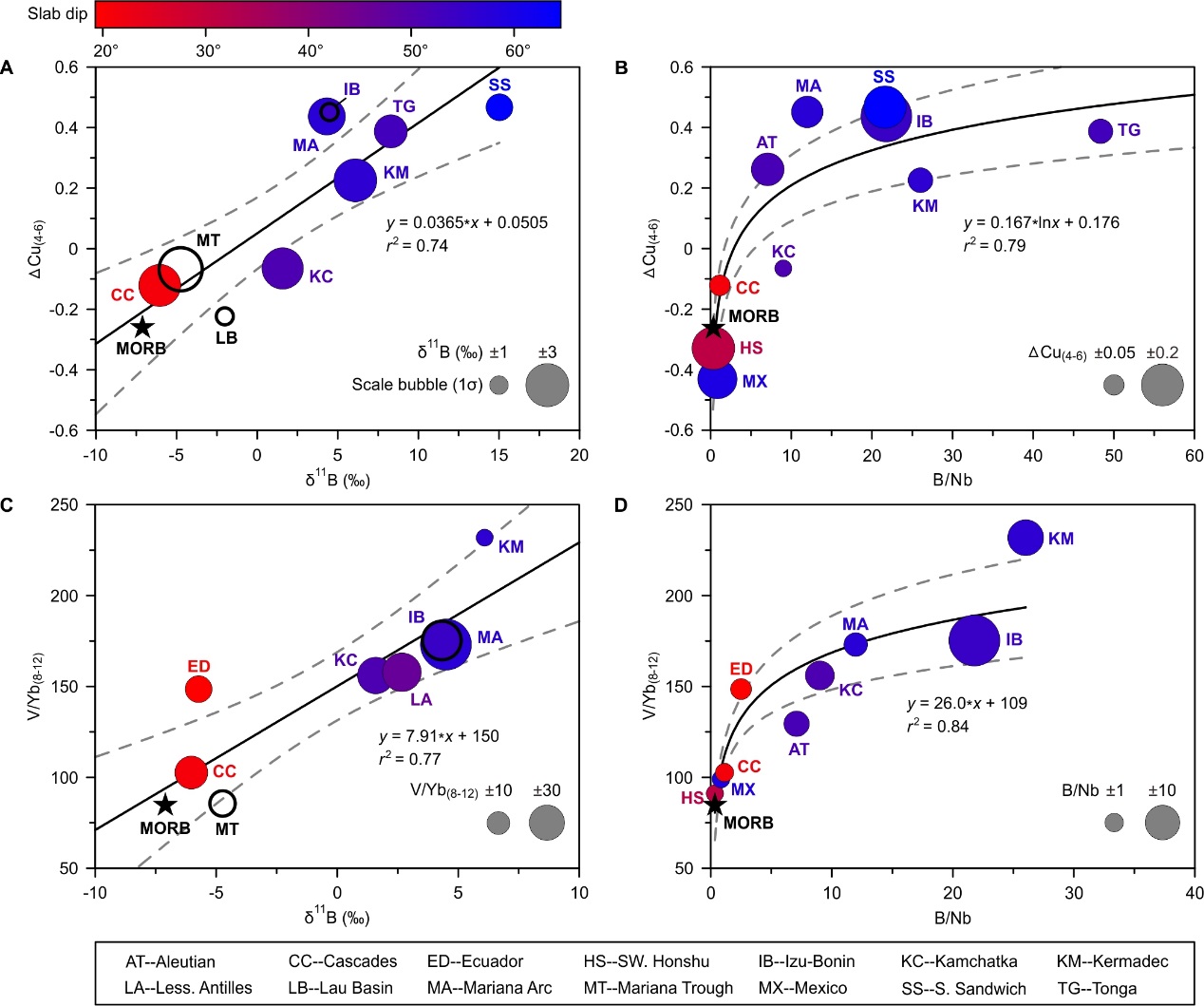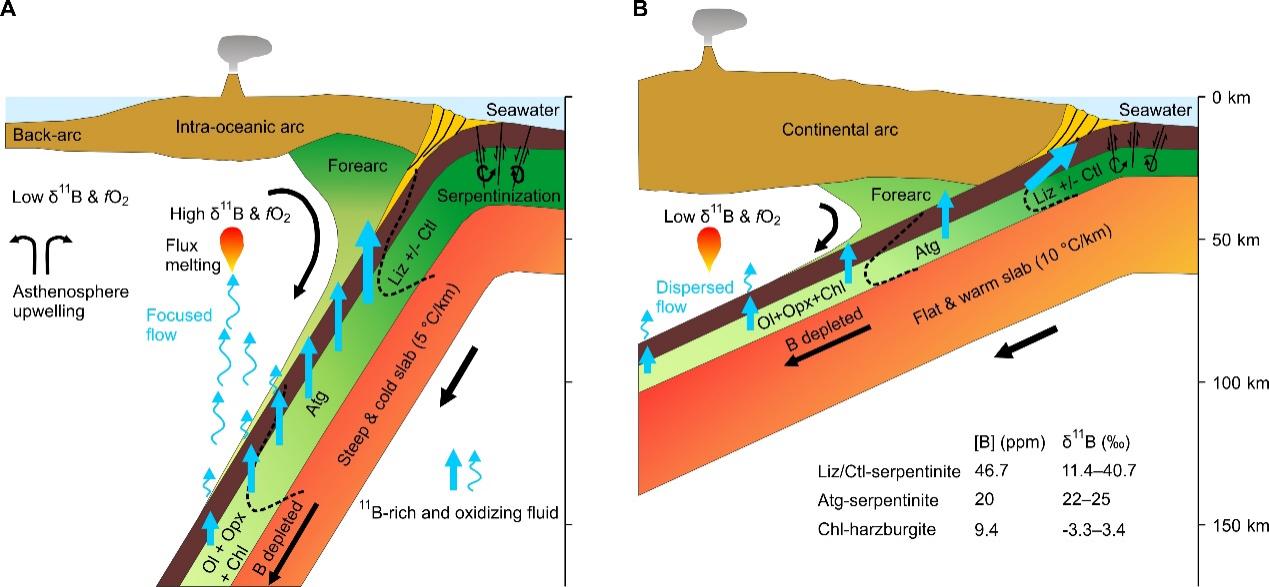It has been proved that arc magmas are more oxidized than the magmas erupted from the mid-ocean ridges, which is probably attributed to the input of oxidizing subduction components into the sub-arc mantle. However, it remains unclear what subduction components control the oxygen fugacity (fO2) of arc magmas.
Recent research suggested that serpentinite dehydration can produce highly oxidizing fluids, which may be responsible for the high fO2 of arc magmas; but some researchers argued that serpentinite-derived fluids are not oxidizing.
Dr. ZHANG Yuxiang of the research team led by Prof. ZENG Zhigang at Institute of Oceanology, Chinese Academy of Sciences (IOCAS), collaborated with researchers from Cornel University and Woods Hole Oceanographic Institution to investigate the relationship between subducted serpentinites and arc magma fO2.
The study was published in Science Advances.
Researchers found that the copper (Cu) behavior in arc magmas is significantly influenced by fO2 (Fig. 1), and, thus, they used Cu enrichment or depletion during magma evolution (△Cu) as a proxy of magma fO2.
In addition, they adopted another experimentally determined fO2 indicator. They used boron (B) isotope (δ11B) and B/niobium (Nb) ratio as proxies for recycled serpentinites and discussed their relationships with fO2 proxies (△Cu and V/Yb). They found that these two group of proxies show robust correlations on a global scale (Fig. 2), suggesting that subducted serpentinites have an important influence on the fO2 of arc magmas.
Another important finding of this study is that the fO2 of primitive arc magmas are not homogeneous globally: continental arc magmas are probably more oxidized than intra-oceanic arc magmas. Dehydration of serpentine minerals is controlled by the pressure-temperature conditions of the subduction system, which are controlled by the subduction parameters such as slab dip, thermal state, arc-trench distance, etc.
The subducting plate beneath the continental arcs are generally young, hot, and flat, and has longer arc-trench distance; thus the serpentinite within the plate dehydrate more efficiently and might have released oxidizing fluids at early stage subduction, leaving a subducting plate that is depleted in oxidizing components when reaching the sub-arc depth. The intra-oceanic subduction zone is just the opposite (Fig. 3).
The study was supported by the funding from the National Natural Science Foundation of China, the Strategic Priority Research Program (B) of Chinese Academy of Sciences, and the Shandong Provincial Natural Science Foundation, China.

Fig. 1 Correlations of Cu concentrations with MgO concentrations

Fig. 2 Correlations of fO2 proxies with serpentinite proxies for global arcs

Fig. 3 Sketch of serpentinite subduction
Zhang, Y., et al. Serpentinite-derived slab fluids control the oxidation state of the subarc mantle. Science Advances, 2021, 7, eabj2515. https://www.science.org/doi/10.1126/sciadv.abj2515.
ZHANG Yuxiang
Institute of Oceanology
E-mail: yxzhang@qdio.ac.cn
(Editor: ZHANG Yiyi)
|
|

Address: 7 Nanhai Road, Qingdao, Shandong 266071, China
Tel: 86-532-82898902 Fax: 86-532-82898612 E-mail: iocas@qdio.ac.cn


